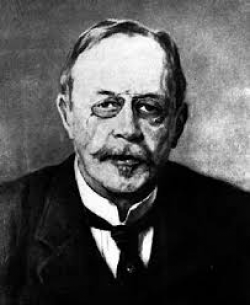Hans Christian Gram

- Born
- 13 September 1853
- Died
- 14 November 1938 (age 85)
Hans Christian Gram was a Danish pharmacologist and pathologist who developed a system of easily identifying between two main types of bacteria. The method, Gram staining, is still widely used and in many cases an invaluable tool in laboratories.
Even as a young child, Gram had a curiosity for biology and the natural world. He went on to study natural sciences at the Copenhagen Metropolitan School in 1871 and became a botany assistant. His interests in botany led him to pharmacology and studies with a microscope, when he developed an interest in medicine.
Attending the University of Copenhagen, in 1878 Gram became a doctor of medicine. He interned in the following years, eventually travelling around Europe studying bacteriology and physiology. It was on one of his placements in Berlin that Gram made his biggest contribution to biology.
While examining tissues from patients who had died from pneumonia, Gram had discovered that certain bacterial cells were getting stained by a solution of crystal violet that he was adding and were showing up as deep purple in colour. He further worked out that almost all bacteria fall into one of two groups, and this method could be used to differentiate between the two.
The method was named Gram staining and is now the most important staining procedure in microbiology, distinguishes between what is called Gram-positive and Gram-negative bacteria. The two groups of bacteria differ in the properties of their cells walls, the main distinguishing factor being a layer of a sugar-amino acid membrane which is thicker in Gram-positive bacteria. In the test, Gram-positive bacteria stain purple, while negative ones to not take up any colour. It was only later that another pathologist, Carl Weigert, developed a staining method for the Gram-negative bacteria to stain a pink-red colour.
In 1891 Gram was appointed professor of pharmacology at University of Copenhagen, and later in 1900 professor of pathology and therapy. Among notable awards, the Danish king awarded Gram the Dannebrog Commander’s Cross, first-class in 1912, and the Golden Medal of Merit in 1924.
Gram married Louise Lohse in 1889 who died eleven years later. Gram himself passed away in 1938.



